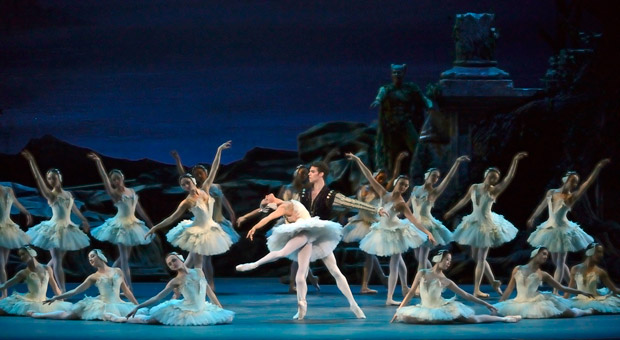
© Gene Schiavone. (Click image for larger version)
American Ballet Theatre
75th Anniversary Gala: excerpts from Billy the Kid, Fancy Free, Rodeo, Black Tuesday, Push Comes to Shove, Fall River Legend, Les Noces, Pillar of Fire, The Bright Stream, Manon, Swan Lake, La Bayadère, Sinfonietta, The Leaves are Fading, Piano Concerto #1, Études, Giselle, La Sylphide, Tchaikovsky Pas de Deux, Le Corsaire, Don Quixote, Theme and Variations
New York, Metropolitan Opera House
19 May 2015
www.abt.org
Soup to Nuts
As galas go, American Ballet Theatre’s 75th Anniversary bash was a good one, festive and briskly paced and well executed by everyone involved. Lots of dancers got to dance, though none stayed long enough to make much of an impression, given the bite-sized portions. The orchestra played well. Atypically for ABT, there was just one guest performer (Maria Kochetkova of San Francisco Ballet), and she was only there to fill in for an injured company-member (Polina Semonova). For once, we got a chance to see the company as a whole, and the impression was positive. Lots of talent coming up even if the top rank of women is looking rather sparse, considering that three of the most senior women – Xiomara Reyes, Paloma Herrera, and Julie Kent – will be gone by the end of the season.
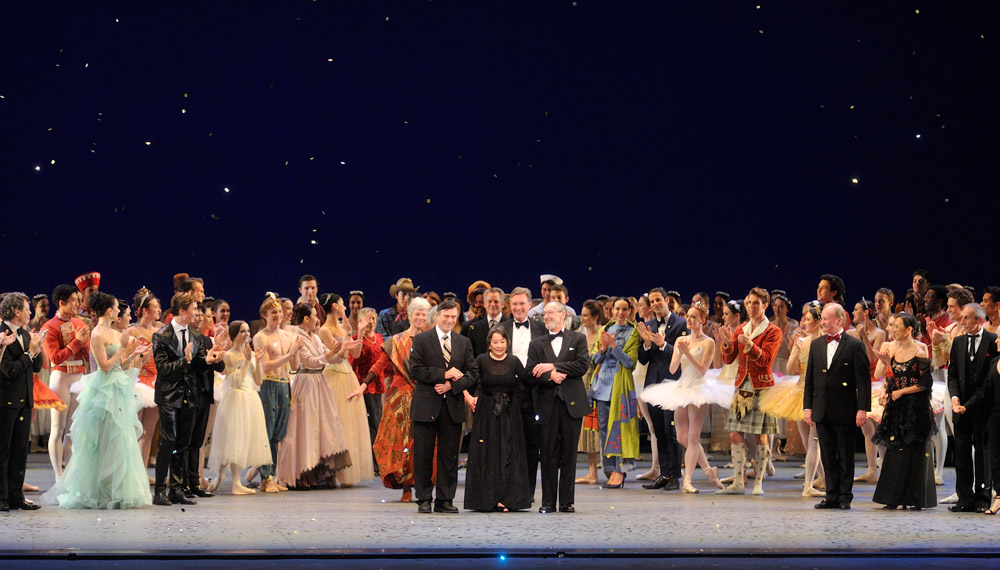
© Gene Schiavone. (Click image for larger version)
There were lots of speeches as well, blessedly short and informative and accompanied by archival photos, and even some video. (In one of the clips, Mikhail Baryshnikov, spinning in tight spirals or flying through the air was as astounding as ever. Will another dancer ever match his particular combination of force and finesse? I doubt it.) It was interesting to be reminded that most of the current crop of ballet masters originally entered the company as dancers during Baryshnikov’s decade-long tenure as artistic director. Which means that the company’s dancing still reflects his taste and standards, something that had never really crossed my mind.
In a recorded message, Caroline Kennedy, now Ambassador to Japan, told a sweet story about being allowed to watch Natalia Makarova rehearse at the White House when she was a kid, because the performance started after her bedtime. Kevin McKenzie, the artistic director, spoke of the breadth of the company’s repertoire: almost five hundred ballets! Dozens of choreographers! The point being, perhaps, to draw a distinction between ABT’s range and New York City Ballet’s focus on producing the works of one choreographer. (Though that company was never mentioned.) It just so happens that the choreographer in question was George Balanchine – not so shabby.
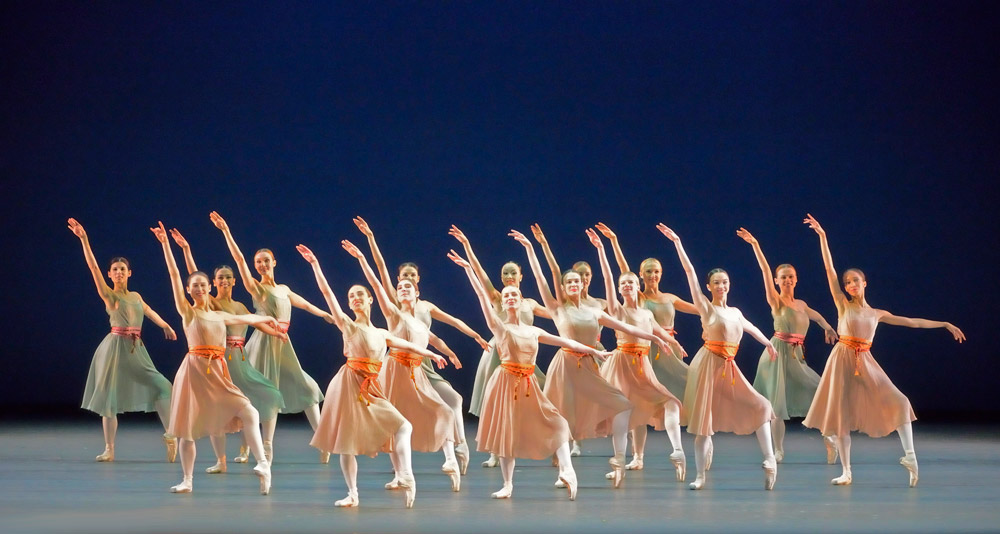
© Gene Schiavone. (Click image for larger version)
In between the speeches came the dancing: short selections from Fancy Free, Rodeo, Black Tuesday, Pillar of Fire, and Theme and Variations, among many others. And, of course, the “Kingdom of the Shades” entrance from La Bayadère, staged for the company by Natalia Makarova in 1980. Down they came in one stretched arabesque after another until they filled the stage. It was lovely. There were rarities, too, like the opening procession of pioneers from “Billy the Kid,” a ballet with music by Aaron Copland, choreographed by Eugene Loring in 1938 for Ballet Caravan, one of the predecessors of New York City Ballet. I would have liked to see more, since it’s not likely to return to the repertory anytime soon. Herman Cornejo led and all-too brief passage from Push Comes to Shove, Twyla Tharp’s first ballet for Baryshnikov (from 1976). Set to music by Haydn, it mixes classical bravura steps with Tharpian hip sways and shoulder squiggles. Cornejo has the precision and the timing, if not quite the same level of swagger.
Gillian Murphy seethed with barely-contained and murderous rage – one of her specialties – in a scene from Agnes de Mille’s Fall River Legend. (She returned to impress with super-fast chaîné turns in a passage from Harald Lander’s joyless Études, but not before the soloist Joseph Gorak had impressed with his own limpid turns à la seconde, first in one direction, then in the other.) Daniil Simkin impersonated a broadly funny sylph in the cross-dressing scene from Alexei Ratmansky’s neo-Soviet farce The Bright Stream, after polishing off some perfectly controlled arabesque turns and impeccable barrel jumps in the “Brother, Can You Spare a Dime” solo from Paul Taylor’s Black Tuesday. Xiomara Reyes, who retires next week, was her adorable self, spunky and round-eyed, in “Saturday at the Corral,” from De Mille’s Rodeo. Julie Kent and Marcelo Gomes frolicked one last time in the bedroom scene from Kenneth MacMillan’s Manon, though it must be said that the vibe in the room was more fraternal than erotic.
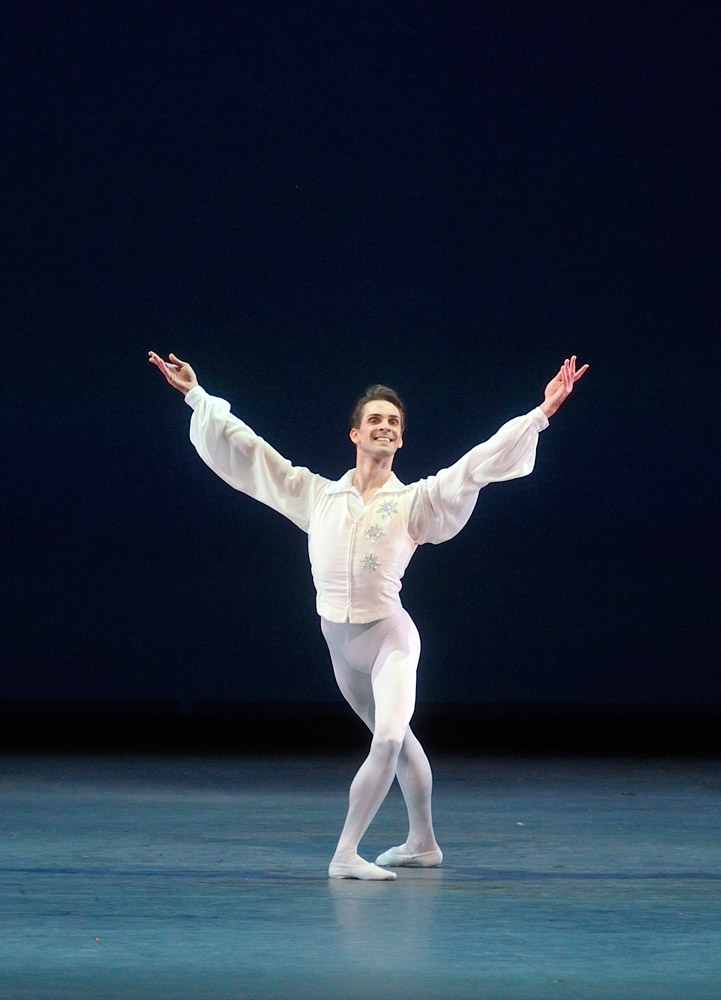
© Gene Schiavone. (Click image for larger version)
We got a taste of Misty Copland’s upcoming New York début in Swan Lake, but she had barely arrived before she was already throwing herself off the rocky promontory and into the lake, followed by the energetic James Whiteside, whose final swan dive had the arc of an Olympic high jump. (I’d give him a 9.5 because there’s always room for improvement.) By the end of the evening, everything had become a blur. A generic ballroom backdrop was projected onto the stage and the dancers crowded around, while every so often one of them broke into a solo, from Le Corsaire (Simkin) or Tchaikovsky Pas de Deux (Paloma Herrera) or La Sylphide (Whiteside). In a coda from Don Quixote, Isabella Boylston enthusiastically embarked on a sequence of extra-fast fouetté turns peppered with doubles, only to lose her balance and then regain it in the nick of time. And then, after a pause, a wave of former dancers of various generations overtook the stage for a final bow.
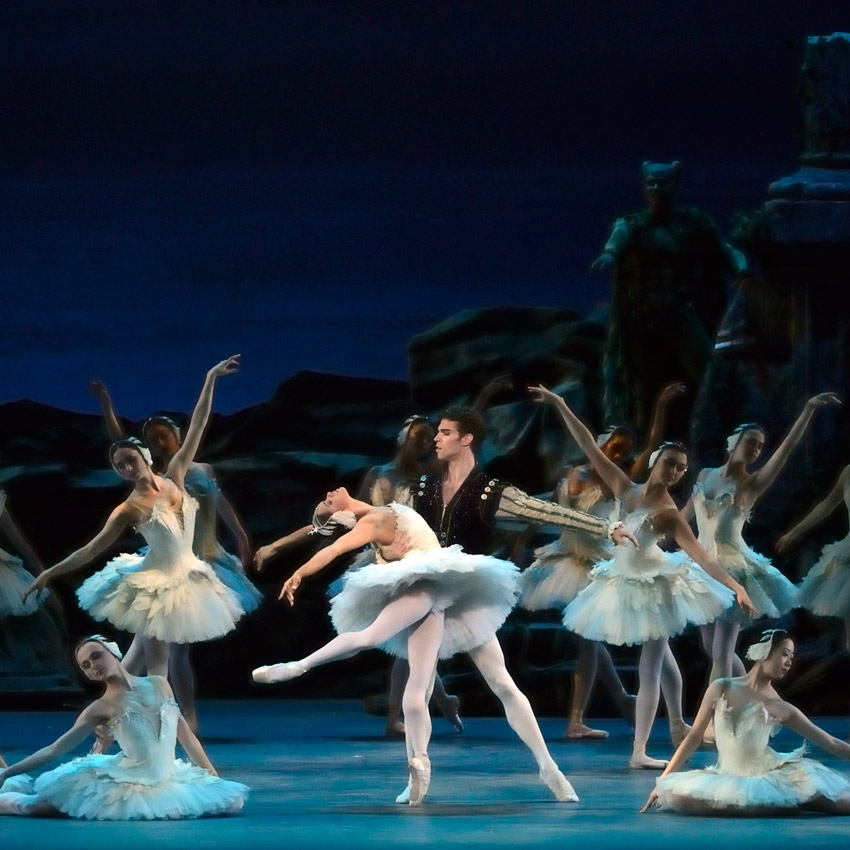
© Gene Schiavone. (Click image for larger version)
Which is to say, it was a fun night. The bejeweled guests seemed happy too as they sauntered off to their dinner and dancing. The rest of us found our way merrily home. Now, down to business.













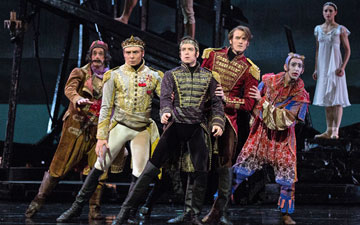


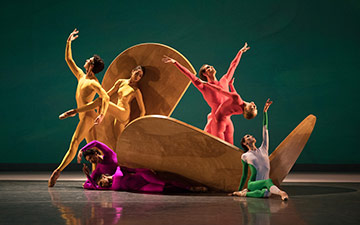
You must be logged in to post a comment.